Manta Ray Vs. Stingray: Key Differences Between Two Ocean Icons
Swimming gracefully through the ocean’s blue depths, manta rays and stingray often get mistaken for each other. Despite their similar flat bodies and wing-like fins, these fascinating creatures couldn’t be more different!
Understanding what sets these ocean icons apart helps us appreciate their unique roles in marine ecosystems.
1. Mouth Position Mystery
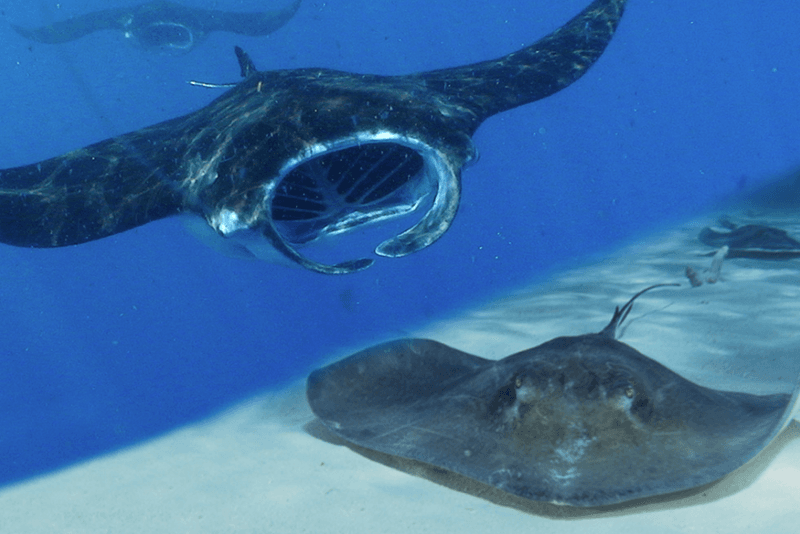
Look at where they feed! Manta rays sport wide mouths at the front of their heads, perfect for gulping plankton while swimming forward.
Stingrays, meanwhile, have their mouths tucked underneath their bodies. This bottom-facing design helps them vacuum up buried prey from the seafloor like living dustbusters.
2. Defensive Tactics

Got a problem? Stingrays pack a venomous barbed stinger on their tails as a powerful defense mechanism. One whip of that tail can deliver a seriously painful sting!
Manta rays evolved without this weapon system. They rely instead on their massive size and swift swimming abilities to escape trouble rather than fight back.
3. Size Showdown

Ever seen a creature that could hug a small car? Manta rays grow up to 23 feet wide, dwarfing their stingray cousins who typically max out at 6.5 feet.
This dramatic size difference is like comparing a hang glider to a kite! Their massive wingspan helps mantas migrate across entire oceans.
4. Brain Power Surprise
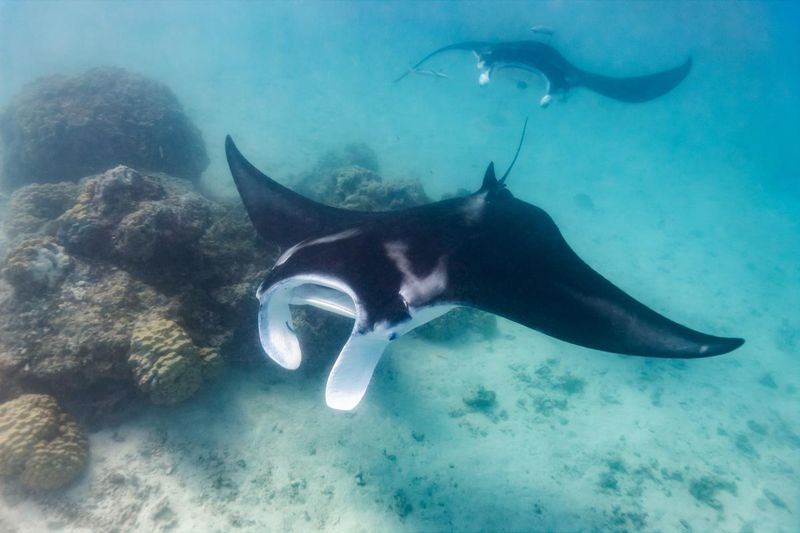
Manta rays boast the largest brain-to-body ratio of any fish! These ocean geniuses recognize themselves in mirrors and remember helpful divers.
While stingrays aren’t exactly fish dummies, their brains are proportionally smaller. Think of mantas as the dolphins of the ray world – surprisingly smart and social underwater neighbors.
5. Feeding Style Flip
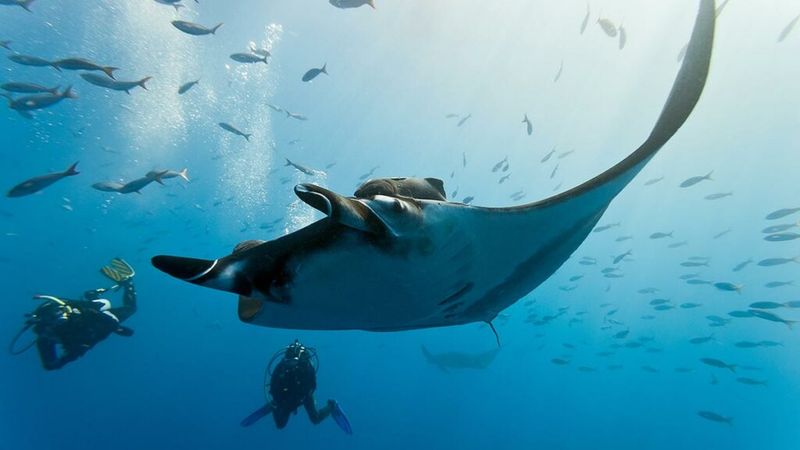
Hungry manta rays transform into living vacuums! They cruise with mouths wide open, filtering tiny plankton through specialized gill plates called cephalic lobes.
Stingrays take a more hands-on approach. They actively hunt by blasting jets of water to uncover buried clams and crabs, then crush them with powerful plate-like teeth. Two completely different dinner strategies!
6. Habitat Preferences
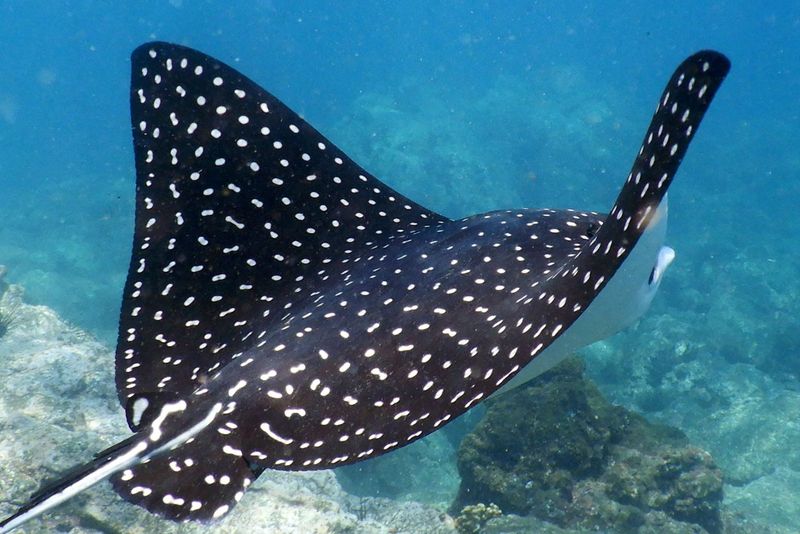
Freedom calls to manta rays! These ocean wanderers roam open waters, sometimes diving to 1,000 feet and migrating thousands of miles between feeding grounds.
Most stingrays prefer the cozy life, sticking to shallow coastal waters and even burying themselves in sand. Some species hang out in freshwater rivers – something no manta would ever do!
7. Breathing Technique Twist
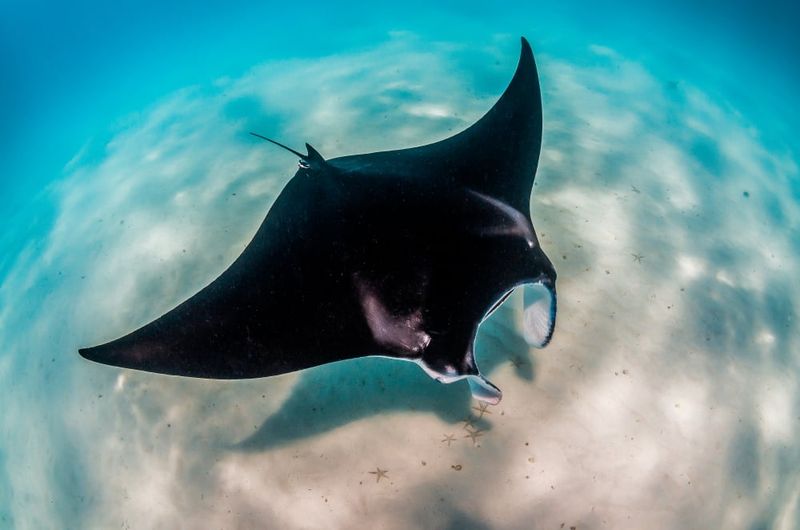
Watch a resting stingray and you’ll notice something peculiar – they actively pump water over their gills through special openings called spiracles on top of their heads.
Manta rays lack these handy breathing holes. Instead, they must keep swimming constantly to push water through their gill slits, making them the perpetual motion machines of the ray world.
8. Reproduction Riddles
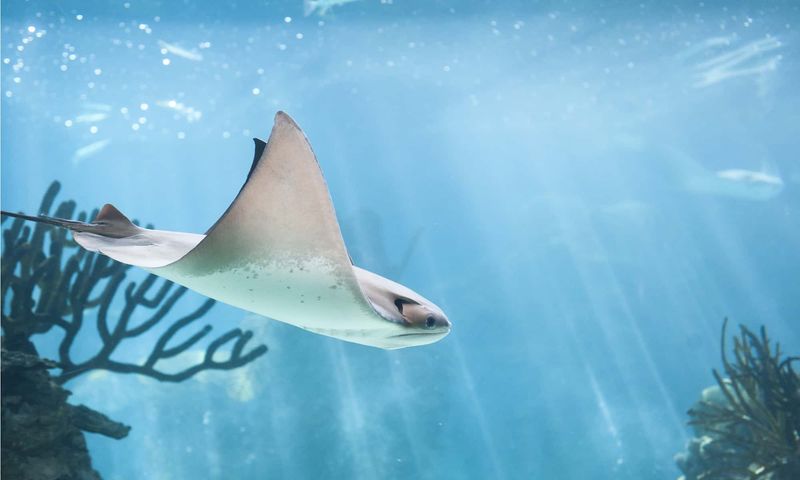
Baby mantas arrive in style! They develop inside eggs within mom’s body until they’re ready to be born as fully-formed mini mantas about 4 feet wide.
Many stingray species take a different approach. Some lay leathery egg cases (called “mermaid’s purses”) that wash up on beaches. Others give birth to live young after they develop in specialized uterine chambers.
9. Lifespan Leap

Patience pays off for manta rays, who enjoy up to 50 years of ocean life! Their slow growth and delayed maturity (reaching adulthood around 10 years) contribute to their impressive longevity.
Most stingray species live the fast life, maturing quickly and typically surviving 15-25 years in the wild. Different life strategies for different ray relatives!
10. Social Butterfly Status

Party time in the deep blue! Manta rays frequently gather in groups at cleaning stations where smaller fish remove parasites from their massive bodies.
Stingrays tend toward the loner life, often preferring solitary hunting and resting. While occasional stingray gatherings occur during mating season, they don’t form the complex social structures seen in their manta cousins.
11. Tail Tale Differences

Manta ray tails look like tiny whips compared to their massive bodies – short, thin, and without spines. Just a leftover appendage with little purpose!
Stingray tails tell a different story. Often longer than their bodies, these tails serve as rudders for steering and house those famous defensive barbs that make beach-goers do the “stingray shuffle.”
12. Swimming Style Spotlight
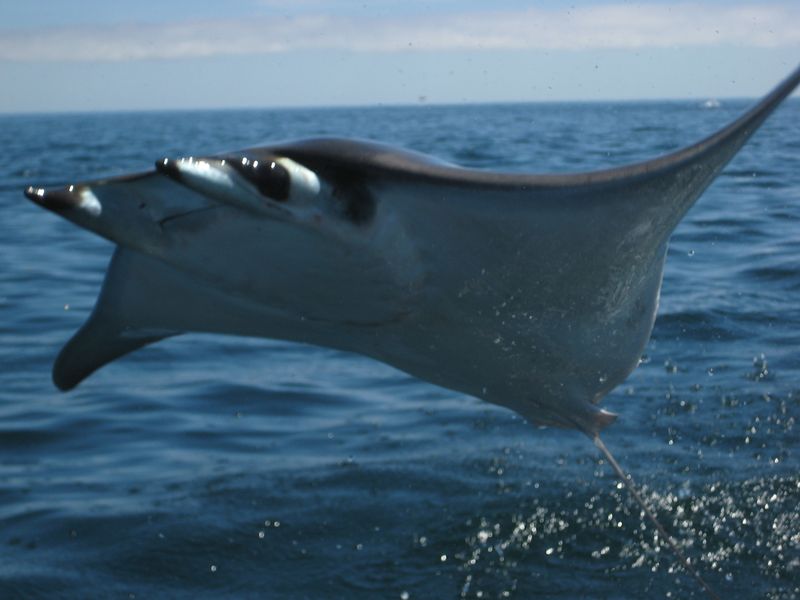
Watch a manta ray and you’ll witness underwater ballet! They fly through water with graceful, bird-like wing flaps and can even leap completely out of the ocean in spectacular breaches.
Stingrays prefer the subtle approach, using undulating waves along their fins to glide across the seafloor. Think of it as the difference between soaring eagles and ground-dwelling birds.
13. Conservation Contrast

Manta rays face serious trouble! These gentle giants are listed as vulnerable or endangered depending on the species, threatened by fishing for their gill plates used in some traditional medicines.
While some stingray populations face challenges, most species aren’t endangered. Their wider distribution and faster reproduction rates help them bounce back more easily from population pressures.
14. Facial Features Faceoff
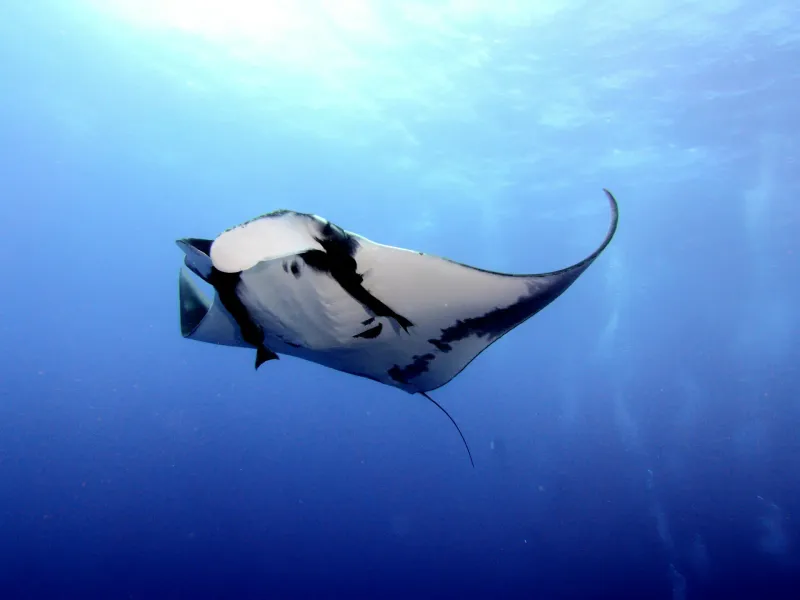
Those weird horn-like appendages on manta rays aren’t decorative! Called cephalic fins, these flexible lobes unfurl during feeding to channel plankton-rich water into their mouths like living funnels.
Stingrays lack these distinctive face features entirely. Their heads blend smoothly into their disc-shaped bodies without any projections, giving them a sleeker, more streamlined appearance.






